Self-guided Sightseeing Tour #9 in Kyoto, Japan
Legend
Guided Free Walking Tours
Book free guided walking tours in Kyoto.
Guided Sightseeing Tours
Book guided sightseeing tours and activities in Kyoto.
Tour Facts
6.2 km
359 m
Experience Kyoto in Japan in a whole new way with our free self-guided sightseeing tour. This site not only offers you practical information and insider tips, but also a rich variety of activities and sights you shouldn't miss. Whether you love art and culture, want to explore historical sites or simply want to experience the vibrant atmosphere of a lively city - you'll find everything you need for your personal adventure here.
Activities in KyotoIndividual Sights in KyotoSight 1: Higashiyama Mount Peak Park
Higashiyama Summit Park is a park located in Higashiyama, on the east side of the Kyoto Basin, on the border between Higashiyama Ward and Yamashina Ward, Kyoto City, Kyoto Prefecture. With the opening of the Higashiyama Driveway in 1960, it was opened as a park with an observation space overlooking the city of Kyoto.
Sight 2: 松林廉之助碑
Matsubayashi Iiyama was a Confucian scholar of the Omura clan during the Edo period. His name is Iiyama, his name is Hou Hong, and his nickname is Rennosuke.
Sight 3: Kōdai-ji
Kōdai-ji , formally identified as Jubuzan Kōdai-ji , is a temple of the Rinzai school of Zen Buddhism in Higashiyama-ku, Kyoto, Japan—the largest subtemple of the Kennin-ji branch.
Sight 4: Ryōzen Kannon
The Ryōzen Kannon (霊山観音) is a war memorial commemorating the dead of the Pacific War located in Eastern Kyoto. The concrete and steel statue of the Bodhisattva Avalokiteśvara (Kannon) was built by Hirosuke Ishikawa and unveiled on 8 June 1955. The statue is 24 m (80 ft) high and weighs approximately 500 tons.
Sight 5: 八坂庚申堂
Yasaka Kōshin-dō (八坂庚申堂), or in its full name Daikoku-san Kongō-ji Kōshin-dō (大黒山金剛寺庚申堂) is a small temple located in Higashiyama, Kyoto, Japan. The temple is located near Kiyomizu-dera.
Sight 6: Hōkan Temple
The Yasaka Pagoda, also known as the Tower of Yasaka, is a Buddhist pagoda located in Higashiyama-ku, Kyoto, Japan. The 5-story tall pagoda is the last remaining structure of a 6th-century temple complex known as Hōkan-ji (法観寺). The pagoda is now a tourist attraction.
Sight 7: Two-year Slope
Ninenzaka, or Ninen-zaka (二年坂) is an ancient 150m stone-paved pedestrian road and tourist attraction in Higashiyama-ku, Kyoto, Japan. The road is lined with traditional buildings and shops, and is often paired with the similar road, Sannenzaka.
Sight 8: Three-year Slope
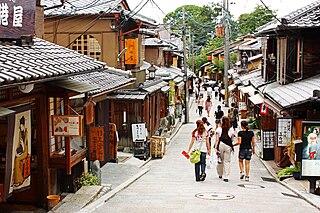
Sannenzaka, or Sannen-zaka (三年坂), is a stone-paved pedestrian road and tourist attraction in Higashiyama-ku, Kyoto, Japan. The road is lined with traditional buildings and shops, and is often paired with the similar road, Ninenzaka. The two roads lead to Kiyomizu-dera Temple, Kodaiji Temple and Yasaka-jinjia Shrine, which are a few famous sights in Kyoto. Sannenzaka itself is a narrow slope that is fill with around 60 shops and restaurants that sell traditional Kyoto products and food. There are also notable shops for visitors to get a hands-on experience of Japanese culture, including tea ceremonies, as well as Maiko and Geisha makeovers.
Sight 9: Jishu Shrine
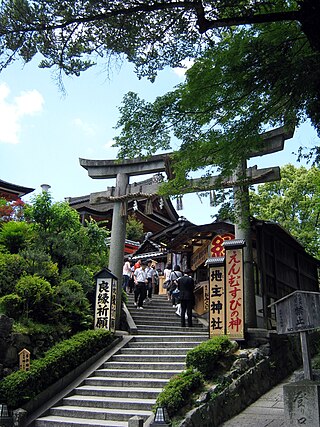
Shrines called landlord shrines are broadly divided into the following. When a shrine or temple is built, a shrine is built to enshrine the landlord god of the land. It may be built as a shrine within the precincts of the shrine, or it may be located adjacent to the temple. Most of the landlord shrines adjacent to the temple were originally part of the adjacent temple (Chinshusha), but most of them became independent due to the separation of Shinto and Buddhist shrines in the Meiji era. In this case, there are also places that read "jinushi jinja". A shrine located in Higashiyama Ward, Kyoto City, Kyoto Prefecture. It is adjacent to Kiyomizu Temple. It is particularly famous among the many landlord shrines in Japan.
Sight 10: Kiyomizu-dera Temple
Get Ticket*Kiyomizu-dera is a Buddhist temple located in eastern Kyoto, Japan. The temple is part of the Historic Monuments of Ancient Kyoto UNESCO World Heritage Site.
Wikipedia: Kiyomizu-dera (EN), Tripadvisor, Website, Youtube
Sight 11: 安祥院
Anshoin is a Jodo sect temple located in Higashiyama Ward, Kyoto City. The mountain name is Higashiyama. The main deity is Amida Nyorai. The Jizo statue enshrined in the Jizo Hall on the temple grounds is said to fulfill various wishes if prayers are offered on designated days, and it is called Higurijizo. It is the 4th temple in the Rokuyōro Amida pilgrimage.
Sight 12: 日體寺
Nichiren Temple or Nichitaiji Temple is a temple of Nichiren Buddhism located in Shimizu, Higashiyama-ku, Kyoto, Japan. The name of the mountain is Mt. Tokosho. The former main temple is Ōmotoyama Honkuji Temple (Rokujōmon-ryū), Yushi Hoen. One of the 12 Zodiac Mysteries of Luoyang (known as the Great Bodhisattva of the Snake and the Zhen Residence of Qingshui). In the precincts is the grave of Tanaka Obigen (a painter of the Edo period).
Sight 13: Rokudouchin-nouji
Rokudōchinnoji Temple is a temple of the Kenninji sect of the Rinzai sect located in Komatsu-cho, Higashiyama-ku, Kyoto. The name of the mountain is Mt. Tsubaki. The honzon is Yakushi Nyorai. It is known for the "Six Paths" from August 7 to 10, the well where Ono is said to have passed through the underworld. It is commonly known as "Mr. Rokudo". This area is said to be the "Tsuji of the Six Paths".
Sight 14: 西福寺
Saifukuji is a Jodo sect temple located in Rokurocho, Higashiyama Ward, Kyoto City. The mountain name is Keikozan, and the main deity is Amida Nyorai. It is formally known as Keishin-in, Keikozan. The "Kozukijizo" enshrined on the temple grounds is said to be effective for children's health and recovery from illness. The "Rokudo no Tsuji" in the Rokurocho area was historically the entrance to Toribeno and was considered a place of impermanence for the corpses sent to the burial site. There were once six Buddhist halls in the vicinity, but today, in addition to Saifukuji, Rokuharamitsuji and Rokudo Chinkonji remain.
Sight 15: 建仁寺
Kennin-ji is a historic Zen Buddhist temple in Kyoto, Japan, and head temple of its associated branch of Rinzai Buddhism. It is considered to be one of the so-called Kyoto Gozan or "five most important Zen temples of Kyoto".
Sight 16: Ryosokuin
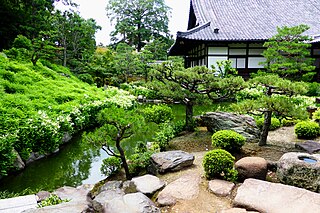
Ryosokuin is a temple of the Kenninji sect of the Rinzai sect located in Higashiyama Ward, Kyoto. The head of the tower of Kenninji Temple. The honzon is Amitabha.
Sight 17: Ebisu-jinja (shrine)
Kyoto Ebisu Shrine is a shrine located in Higashiyama -ku, Kyoto. The old business is a town. It is attracting the religion of the people by prosperous business, prosperous home luck, and travel safety. The registration religious corporation name is Ebisujinja.
Sight 18: Kyusho-in Temple
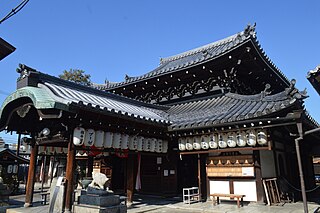
Zenkyoan is a temple of the Kenninji sect of the Rinzai sect located at 146 Komatsu-cho, Higashiyama-ku, Kyoto-shi, Kyoto Prefecture. The head of the tower of Kenninji Temple. The main Buddha is the Holy Kannon Bodhisattva. It is known as a temple dedicated to the secret Buddha Mari Shiten. The 12 fusuma paintings by Kaihoku Tomomatsu are important cultural properties and are deposited at the Kyoto National Museum.
Share
How likely are you to recommend us?
Disclaimer Please be aware of your surroundings and do not enter private property. We are not liable for any damages that occur during the tours.
GPX-Download For navigation apps and GPS devices you can download the tour as a GPX file.
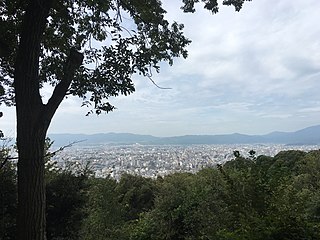
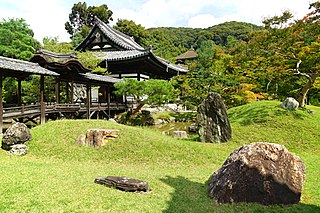
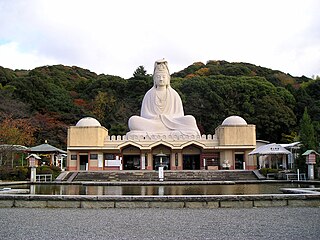
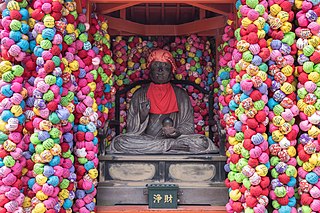
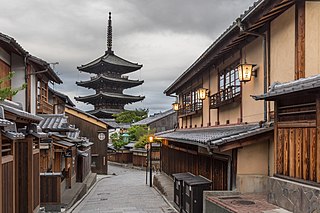
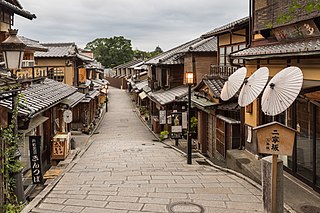
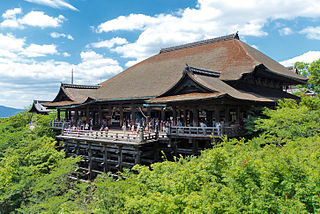


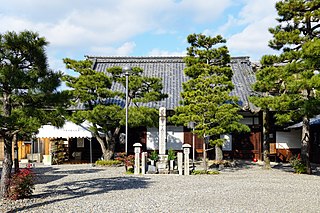
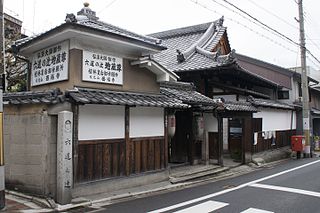
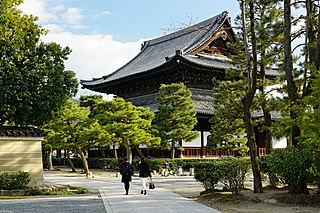
.jpg)